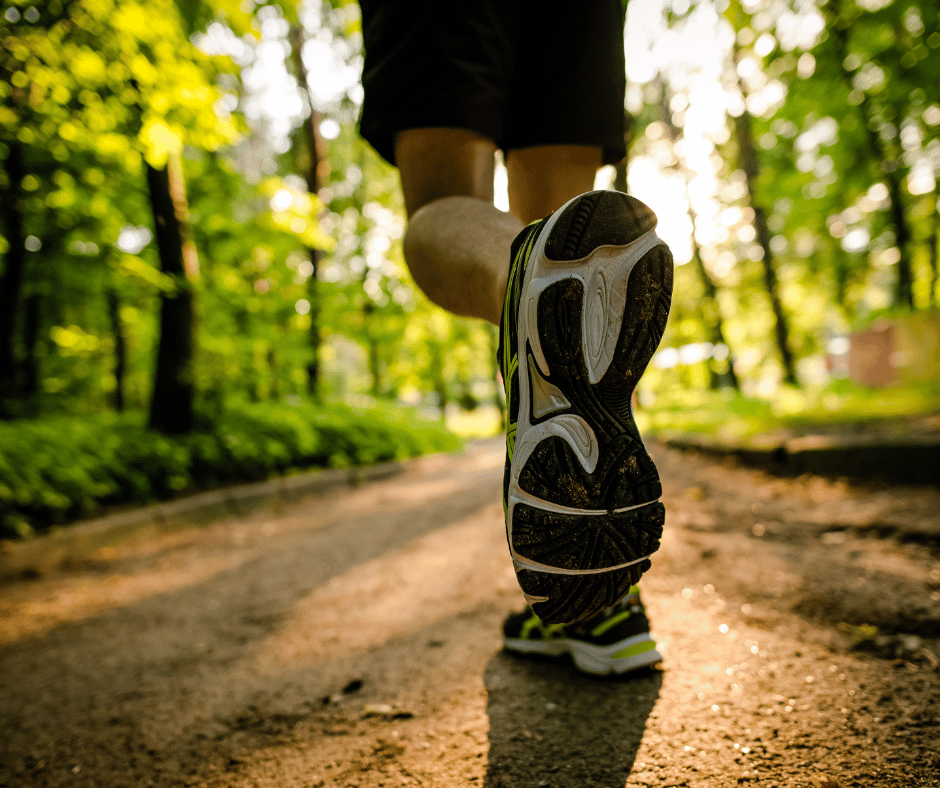Human bodies and minds developed over millions of years to survive as hunter-gatherers. This primal lifestyle shaped our biology and psychology, making us well-adapted to a world of constant movement, natural foods, and close-knit communities. Contrast this with modern society, filled with chronic stress, obesity, anxiety, screen addictions, and overwhelming social expectations. The gap between these two lifestyles is staggering, and it is no wonder our bodies and minds are struggling to cope. By understanding and integrating Stone Age living principles, we can unlock solutions to many of today’s pressing health issues. This article will show you how embracing elements of our ancestral lifestyle can lead to profound improvements in your well-being.
Defining Stone Age Living
Stone Age living is a lifestyle inspired by the principles and habits of our ancient ancestors. It goes beyond just diet and exercise; it’s about adopting a holistic approach to daily life that prioritizes natural rhythms and simplicity. Here’s how you can incorporate Stone Age principles into your modern life:
- Diet: Focus on consuming whole, unprocessed foods such as fruits, vegetables, nuts, seeds, and lean meats. Avoid processed foods, refined sugars, and artificial ingredients.
- Physical Activity: Stay active throughout the day with a mix of functional exercises, such as walking, climbing, lifting, and even playful movements like dancing or playing sports.
- Minimal Screen Time: Limit your exposure to screens. Replace TV and smartphone time with reading, crafting, or outdoor activities.
- Natural Sleep Rhythms: Align your sleep patterns with the sun. Wake up with the sunrise and wind down as it sets, avoiding artificial light and screens in the evening.
- Social Connections: Strengthen your social bonds by spending quality time with family and friends. Engage in communal activities like cooking, storytelling, and group exercises.
- Outdoor Exposure: Spend more time outdoors. Engage in activities like hiking, gardening, or simply enjoying nature. Fresh air, sunlight, and natural surroundings can significantly enhance your mood and health.
- Mindfulness and Relaxation: Practice mindfulness, meditation, or deep breathing exercises to manage stress and maintain mental clarity. These practices can help you stay grounded and connected to the present moment.

Examples and Benefits of Stone Age Living
Diet: Natural and Unprocessed Foods
A Stone Age diet consists of natural, unprocessed foods like fruits, vegetables, nuts, seeds, and lean meats. This diet can reduce the risk of chronic diseases such as obesity, diabetes, and heart disease. Modern diets, filled with processed foods, contribute to these conditions. Switching to a more natural diet can significantly improve health.
Benefits:
- Reduced risk of chronic diseases
- Better weight management
- Improved digestion and energy levels
Read a controversial view on eating habits in the article The Stone Age Diet: Rethinking When We Eat, Not Just What We Eat
Activity: Daily Physical Movement
Our ancestors were constantly on the move, hunting and gathering food. Today, sedentary lifestyles dominate, leading to numerous health issues. Incorporating more daily physical activity, such as walking, climbing, or Stone Age-inspired workouts, can enhance physical health and mental well-being.
Benefits:
- Increased physical fitness
- Improved mental health
- Enhanced mood and energy
Technology: Minimal Screen Time
Stone Age living emphasizes minimal screen time. Modern society’s screen addiction leads to eye strain, poor sleep, and reduced physical activity. Limiting screen time can improve sleep quality and increase physical and social activity.
Benefits:
- Better sleep quality
- More physical and social activity
- Reduced stress and anxiety
Consider trying one of the following “4 Digital Detox Challenges To Test Your Screen Addiction” if you want to see how addicted you actually are to your screens.
Sleep: Natural Rhythms
Our ancestors followed natural sleep patterns, waking with the sun and sleeping soon after sunset. Modern life disrupts these rhythms, contributing to sleep disorders and related health problems. Aligning sleep patterns with natural rhythms can improve sleep quality and overall health.
Benefits:
- Enhanced sleep quality
- Better mental and physical health
- Improved cognitive function
Social Connections: Strengthening Community Bonds
Stone Age societies thrived on close-knit communities where social bonds were strong and essential for survival. Modern life often leads to social isolation and weakened community ties, contributing to mental health issues such as depression and anxiety. Fostering deeper social connections can significantly enhance emotional well-being.
Benefits:
- Enhanced emotional well-being
- Increased sense of belonging
- Reduced feelings of loneliness and isolation
Mental Health: Reducing Stress and Anxiety
Stone Age living involved spending a significant amount of time outdoors, engaging in physical activities, and having a clear purpose for daily actions. Modern life, with its constant stressors and fast-paced environment, often leads to chronic stress and anxiety. Adopting a more nature-oriented, purpose-driven lifestyle can alleviate these mental health challenges.
Benefits:
- Reduced stress levels
- Improved mental clarity and focus
- Enhanced overall mood and happiness
Consider reading the “3 Simple But Powerfull Coping Strategies For Everyday Stress” if you sometimes feel overwhelmed with things to do.
Exposure to Nature: Embracing the Outdoors
Our ancestors spent most of their time outdoors, benefiting from fresh air, sunlight, and natural surroundings. Modern lifestyles often confine us indoors, leading to a disconnection from nature. Regular exposure to nature can improve physical health, boost mood, and enhance cognitive function.
Benefits:
- Improved physical health
- Enhanced mood and cognitive function
- Greater appreciation for the natural world

Provoking Modern Norms
Modern society’s norms are far from what our bodies and minds are adapted to handle. The Stone Age lifestyle offers a provocative alternative. It challenges the consumption of processed foods, the obsession with screens, and the sedentary lifestyle. It also questions the unnatural sleep patterns most people follow. Embracing Stone Age living is not about rejecting modern life but about integrating ancient wisdom to create a healthier, more balanced existence.
Taking It to the Extreme
Imagine living a day or a week to the extreme like our Stone Age ancestors, within the limits of modern society. How would that look?
- Morning Ritual:
- Wake up with the sunrise.
- Begin the day with a walk or jog in nature, simulating a hunt or gathering expedition.
- Practice mindfulness or meditation outdoors to connect with nature.
- Natural Diet:
- Eat only whole, unprocessed foods such as fruits, vegetables, nuts, seeds, and lean meats.
- Avoid all processed foods, refined sugars, and artificial ingredients.
- Practice intermittent fasting, eating only when truly hungry.
- Physical Activity:
- Engage in various physical activities throughout the day. This could include hiking, climbing, or bodyweight exercises.
- Mimic the movements of hunting and gathering, focusing on functional fitness.
- Minimal Technology:
- Limit screen time to essential tasks only. Avoid all recreational use of digital devices.
- Spend time reading, crafting, or engaging in face-to-face conversations instead.
- Social Connection:
- Spend quality time with family and friends, strengthening social bonds.
- Participate in communal activities such as cooking, storytelling, or group exercises.
- Evening Routine:
- Wind down as the sun sets, avoiding artificial light and screens.
- Prepare for sleep with relaxation techniques such as gentle stretching or deep breathing.
- Go to bed early to align sleep patterns with natural circadian rhythms.
Living like this, even for a short period, can offer profound insights into our well-being. It helps us understand how our bodies and minds thrive when aligned with natural rhythms and ancient practices. While it may not be practical to maintain this extreme lifestyle indefinitely, incorporating elements of Stone Age living into our daily routines can significantly improve our health and happiness.

Conclusion
What is Stone Age living? It is a lifestyle inspired by our ancestors, emphasizing natural diets, physical activity, minimal screen time, and natural sleep rhythms. By adopting these principles, we can address many modern health issues and lead a more fulfilling life. Stone Age living offers a way to reconnect with our biological roots and improve our well-being in today’s fast-paced world.
This article is a philosophical exploration of modern living through the lens of Stone Age principles. For personalized advice, consult a healthcare professional.
Additional Reading and Reach Out
If you found this article interesting, you might also enjoy reading “Stone Age Living: Could Ancient Habits Be The Key To Our Modern Health Crisis?“. For any questions or to dive deeper into these ideas, feel free to reach out via this link. Life is all about learning, and the best way to learn is through communication and debate, so please don’t hesitate to connect!
Reflection and Disclaimer
This article was written to provoke modern society norms and encourage you to reflect on your own life. While the content sometimes presents a black-and-white picture, I acknowledge that life is rarely that simple. I am not a behavioral science expert, and this article is based on personal experiences that have helped me find more fulfillment. For professional advice regarding serious health issues, please always consult medical experts.

1 thought on “What is Stone Age Living? Integrating Prehistoric Habits into Modern Life”